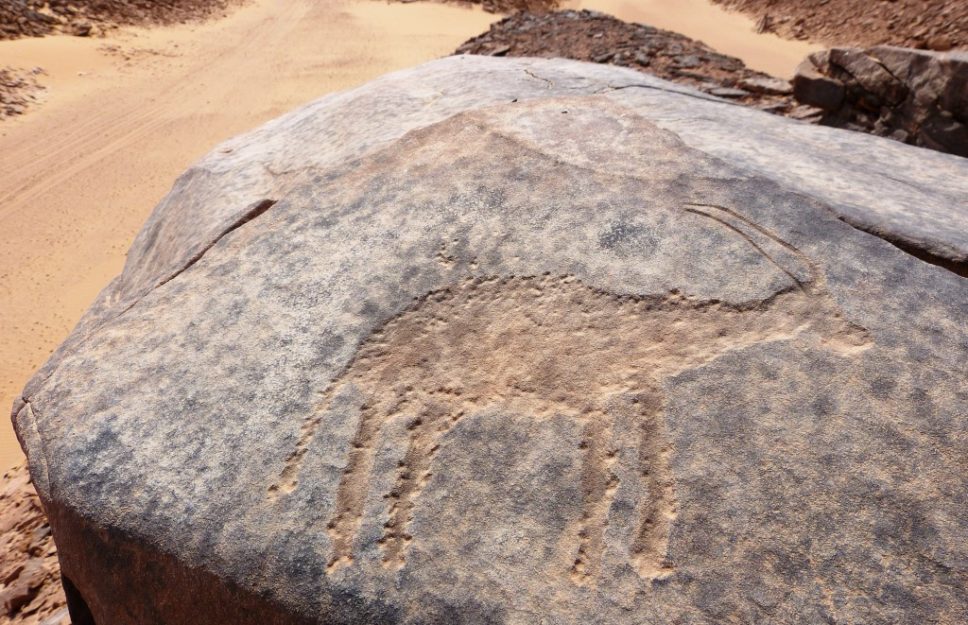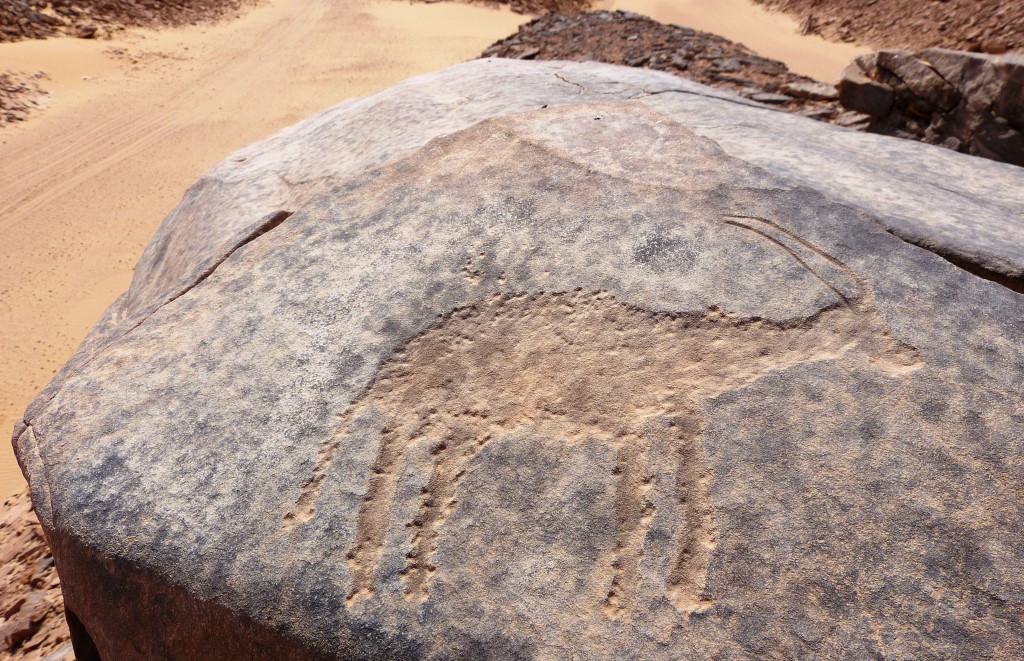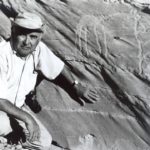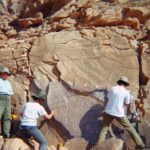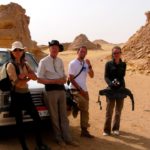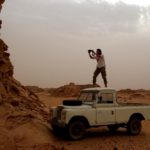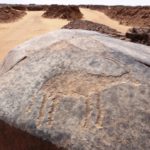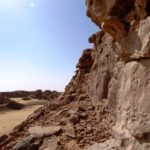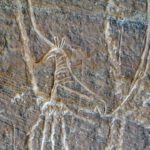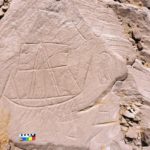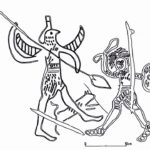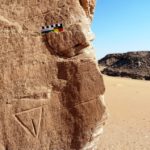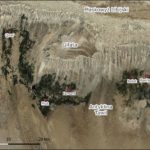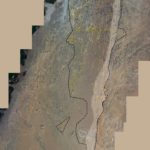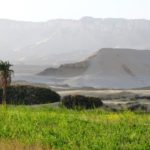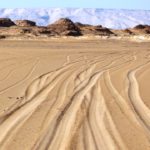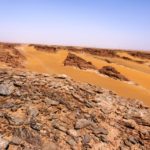Dakhleh Oasis
Dakhla Oasis
-
Project name:
The Petroglyph Unit of the Dakhleh Oasis Project
Facebook:
THE PETROGLYPH UNIT. Rock art research in the Dakhleh Oasis, Egypt
ResearchGate:
THE PETROGLYPH UNIT – rock art research in the Dakhleh Oasis, Egypt
-
Type of site:
Open site – hills with rock art
Location:
Egypt
Western DesertDating:
– Prehistoric period (ca. 7000–2500 BC)
– Dynastic period (ca. 2500–332 BC)
– Greco-Roman period (332 BC–AD 395)
– Byzantine period (395–641)
– Islamic period and modern times (641+)
Most interesting finds:
– several hundred sites with petroglyphs discovered in the eastern and central parts of the Dakhleh Oasis
– rediscovery of the so-called Winkler sites (first recorded in the 1930s), the location of which was forgotten after World War II
– Neolithic anthropomorphic depictions, very attractive from the scientific and aesthetic point of view (on the “Altar” and “Gallery” sites, among others)
– petroglyphs from nearly all periods of the oasis’s history, including unique depictions of god Seth, giraffes led on a rope, one of two Neolithic depictions of an elephant known from Dakhleh, numerous petroglyphs and inscriptions dated to the Old, Middle, and New Kingdoms, images of boats and many others
History of research:
Dates of PCMA mission’s work:
1985–2017 (with intervals)
Type of research:
Archaeological reconnaissance, rock art documentation
Directors:
Lech Krzyżaniak (1985–2004)
Michał Kobusiewicz (2004–2016)
Paweł Polkowski (2016– )
Co-operating institutions:
– Polish Centre of Mediterranean Archaeology, University of Warsaw
– Archaeological Museum in Poznań
Additional information:
The following grants were awarded for the research in Dakhleh:
2017–2020: Project “Rocks in motion. Research on the Dakhleh Oasis petroglyphs in the context of paths, roads and mobility”, funded by the National Science Centre, no. 2016/23/D/HS3/00805.
2013–2015: Project “Rock art as an element of cultural landscape of the Dakhleh Oasis”, funded by the National Science Centre, no. 2013/08/T/HS3/00355 (ETIUDA 1).
2012–2016: Project “In the palimpsest. Rock art in the archaeological landscapes of the Dakhleh Oasis”, funded by the National Science Centre, no. DEC-2011/01/N/HS3/05994.
Description of the site and research:
The “Petroglyph Unit” was created in 1985 by Lech Krzyżaniak, then director of the Archaeological Museum in Poznań, as a specialized unit dedicated to the study of rock art. It was an answer to the invitation issued by Anthony Mills from the Royal Ontario Museum in Canada, who in 1977 initiated a large multidisciplinary research program called the Dakhleh Oasis Project.
The aims of the project included, as they do today, archaeological, ethnographic, linguistic, and nature studies concerning all periods of the oasis’s history. Already the first few seasons of the reconnaissance, begun in 1978, showed that especially one kind of monuments would require detailed and probably long-term research – rock art.
The study of petroglyphs of Dakhleh has lasted more than 30 years, although the fieldwork was not conducted annually. Until 2003, almost all research activities concentrated on the eastern border of the oasis. It is an area where pioneers of archaeology in Dakhleh, such as Herbert Winlock and Hans Alexander Winkler, discovered petroglyphs already before World War II. Krzyżaniak not only found most of the sites which had been discovered 50 years before and the location of which had been forgotten but also made new, equally important discoveries. His research was much more systematic, and the high quality of documentation is still impressive after 30 years. Using aerial photography, Krzyżaniak was able to conduct fieldwork with more precision than his predecessors. As a prehistorian, he focused predominantly on the oldest petroglyphs in the oasis, mainly zoomorphic depictions and the famous “pregnant women”.
In 2003, Krzyżaniak carried out a short reconnaissance in the central part of Dakhleh and made many important discoveries. Unfortunately, he died the next year, and Michał Kobusiewicz from the Institute of Archaeology and Ethnology of the Polish Academy of Sciences became the new head of the “Petroglyph Unit”. Kobusiewicz decided to continue working in the Central Oasis since it seemed a very promising area in light of Krzyżaniak’s reconnaissance. He was not disappointed. The next decade of research resulted in the recording of approximately 270 new sites with petroglyphs. Work concentrated mainly in a very interesting 10-km-long valley called the “Painted Wadi”. Thanks to Paweł Polkowski from the Archaeological Museum in Poznań (current expedition director), who joined the team in 2011, and two research grants funded by the National Science Centre, it was possible to significantly extend the prospection area and create a very detailed map showing the distribution of panels with rock art, the number of which had risen to more than 1,300.
Among the magnitude of documented rock art, there are depictions dating to almost all periods of the last 9,000 years (if not more!). They include depictions of animals, mostly giraffes and oryx antelopes; the already-mentioned “pregnant women” with protruding bellies; dynastic carvings, such as hieroglyphs, feet and sandals, pubic triangles, and boats; Greco-Roman motifs, e.g., human depictions; finally, Beduin markings and other Arabic depictions, such as camels or fighting figures. In 2016, the first monograph devoted to the petroglyphs of Dakhleh was published, entitled “Landscape and Rock Art. In the Palimpsest of the Dakhleh Oasis”. After a few years of forced hiatus, fieldwork is scheduled to recommence in 2018.
Research results:
Season by season – “PCMA Newsletter”:
- 2015 season
- 2014 season
- 2013 season
- 2012 season
- 2011 season
- 2009 season
- 2008 season
- 2007 season
- 2006 season
Associated events:
2021-10 PCMA Seminar: Dakhleh Oasis – the last 10 years of rock art research
2021-10 National Science Centre 2021 award for Dr. Paweł Polkowski
Permanent exhibition in the Archaeological Museum in Poznań “Rock art of North Africa”
Polkowski, P. L. (w druku). A tale of giraffe. On enigmatic composition from site 04/08 in the central Dakhleh Oasis, Egypt. In J. Kabaciński, M. Chłodnicki & M. Kobusiewicz (Eds.) African Studies. Poznań: Poznań Archaeological Museum.
Polkowski, P. L. (w druku). World of images or imaginary world. Rock art, landscape and agency at the Dakhleh Oasis in Egypt. In Proceedings of the conference Rock Art and (Non Textual) Graffiti in Context in Cairo 11–12.12.2016.
Polkowski, P. L. (w druku). Feet, sandals and the animate landscapes. Some considerations on the rock art of the Dakhleh Oasis, Egypt. In Proceedings of the conference What Ever Happened to the People? Humans and Anthropomorphs in the Rock Art of Northern Africa. Brussels 17–19.09.2015. Brussels: The Royal Academy for Overseas Sciences and the Royal Museums of Art and History.
Polkowski, P. L. (2016). Krajobraz i sztuka naskalna. W palimpseście egipskiej Oazy Dachla. Poznań: Muzeum Archeologiczne w Poznaniu
Polkowski P. L. (2015). Meanders of interpretation: Interpreting the meandering lines. In J. Kabaciński, M. Chłodnicki & M. Kobusiewicz (Eds.) Hunters-Gatherers and Early Food Producing Societies in Northeastern Africa (pp. 297–334). Poznań: Poznań Archaeological Museum.
Polkowski, P. L. (2015). The Life of Petroglyphs: A Biographical Approach to Rock Art in the Dakhleh Oasis, Egypt. American Indian Rock Art, 41, 43–55.
Kobusiewicz, M. & Kuciewicz, E. (2015). Last Research of Petroglyph Unit in Dakhleh Oasis. Western Desert of Egypt. In J. Kabaciński, M. Chłodnicki & M. Kobusiewicz (Eds.) Hunters-Gatherers and Early Food Producing Societies in Northeastern Africa (pp. 287–296). Poznań: Poznań Archaeological Museum.
Kuciewicz, E., Polkowski, P. L. & Kobusiewicz, M. (2014). Dakhleh Oasis Project, Petroglyph Unit: rock art research 2011. Polish Archaeology in the Mediterranean, 23(1), 229–244.
Polkowski P. L., Kuciewicz, E., Jaroni, E. & Kobusiewicz, M. (2013). Rock art research in the Dakhleh Oasis, Western Desert (Egypt). Petroglyph Unit. Dakhleh Oasis Project. Sahara, 24, 101–118.
Kobusiewicz, M. (2012). Nowe odkrycia prahistorycznej sztuki naskalnej w północno-wschodniej Afryce. Nauka, 3/2012, 155–166.
Kuciewicz, E. & Kobusiewicz, M. (2012). Dakhleh Oasis Project, Petroglyph Unit. Rock art research, 2009. Polish Archaeology in the Mediterranean, 21, 279–287.
Kuciewicz, E. & Kobusiewicz, M. (2011). Dakhleh Oasis Project, Petroglyph Unit. Rock art research, 2008. Polish Archaeology in the Mediterranean, 20, 237–244.
Kuciewicz, E., Jaroni, E. & Kobusiewicz, M. (2010). Dakhleh Oasis, Petroglyph Unit. Rock art research, 2007. Polish Archaeology in the Mediterranean, 19, 305–310.
Kuciewicz, E., Jaroni, E. & Kobusiewicz, M. (2008). Dakhleh Oasis, Petroglyph Unit. Rock art research, 2006. Polish Archaeology in the Mediterranean, 18, 317–322.
Kuciewicz, E., Jaroni, E. & Kobusiewicz, M. (2007). Dakhleh Oasis, Petroglyph Unit. New rock art sites, season 2005. Polish Archaeology in the Mediterranean, 17, 279–284.
Kuciewicz, E., Jaroni, E. & Kobusiewicz, M. (2007). The Petroglyphs’ Code. Academia, 1(13), 4–8.
Krzyżaniak, L. (2004). Dakhleh Oasis. Research on petroglyphs 2003. Polish Archaeology in the Mediterranean, 15, 181–189.
Krzyżaniak, L. (2001). Dakhleh Oasis. Research on petroglyphs 2000. Polish Archaeology in the Mediterranean, 12, 249–257.
Krzyżaniak, L. (1999). Dakhleh Oasis. Research on petroglyphs 1998. Polish Archaeology in the Mediterranean, 10, 131–134.
Krzyżaniak, L. (1994). Oaza Dachla: badania sztuki naskalnej w 1993 roku. Raporty Wykopaliskowe, 5, 82–86.
Krzyżaniak, L. (1993). Dakhleh Oasis: research on the rock art, 1992. Polish Archaeology in the Mediterranean, 4, 80–82.
Krzyżaniak, L. (1991). Dakhleh Oasis Project: research on the petroglyphs, 1990. Polish Archaeology in the Mediterranean, 2, 60–64.
Krzyżaniak, L. & Kroeper, K. (1991). A face-mask in the Prehistoric Rock Art of the Dakhleh Oasis? Archéo-Nil, 1, 59–61.
Krzyżaniak, L. (1990). Petroglyphs and the research on the development of the cultural attitude towards animals in the Dakhleh Oasis (Egypt). Sahara, 3, 95–97.
Krzyżaniak, L. & Kroeper, K. (1990). The Dakhleh Oasis Project: interim report on the second (1990) and third (1992) seasons of the recording of petroglyphs. Journal of the Society for the Study of Egyptian Antiquities, 20, 77–88.
Krzyżaniak, L. (1987). Dakhleh Oasis Project: interim report on the first season of the recording of petroglyphs, January/February 1988. Journal of the Society for the Study of Egyptian Antiquities, 17(4), 182–191.
Krzyżaniak, L. & Kroeper, K. (1985). Dakhleh Oasis Project: Report on the reconnaissance season of the recording of petroglyphs, December 1985. Journal of the Society for the Study of Egyptian Antiquities, 15(4), 138–139.
Gallery:
-
1. Lech Krzyżaniak and one of his last discoveries on site 02/08 / Lech Krzyżaniak i jedno z jego ostatnich odkryć na stanowisku 02/08 (fot. E. Kuciewicz)
-
2. One of the primary methods of documenting rock carvings is redrawing them on transparent foil fastened to the rock / Do podstawowych sposobów dokumentacji rytów naskalnych należy rysowanie ich na przezroczystych foliach przytwierdzonych do skały (fot. M. Kobusiewicz)
-
3. The Petroglyph Unit team in 2011. From the left: Eliza Jaroni, Michał Kobusiewicz, Paweł Polkowski, Ewa Kuciewicz / Zespół Petroglyph Unit w 2011 roku. Od lewej: Eliza Jaroni, Michał Kobusiewicz, Paweł Polkowski, Ewa Kuciewicz
-
4. To document a petroglyph, it is sometimes necessary to use every available measure. In this case, a well-worn Land Rover which has served the Dakhleh Oasis Project for more than 40 years / Niekiedy trzeba skorzystać ze wszelkich dostępnych środków, aby móc udokumentować petroglify. W tym wypadku trzeba było użyć wysłużonego Land Rovera należącego do Dakhleh Oasis Project od ponad 40 lat (fot. E. Kuciewicz)
-
5. Oryx antelope is one of the animal depictions most frequently found in the oasis. It is characterized by long curved horns, hence its name – scimitar oryx. Site CO67 / Jednym z najczęściej odnajdowanych przedstawień zwierzęcych w oazie jest antylopa oryks. Charakterystyczną cechą tej antylopy są długie, zakrzywione rogi, stąd jej nazwa – oryks szablorogi. Stan. CO67 (fot. P. Polkowski)
-
6. Prehistoric carvings can sometimes be found in the higher parts of sandstone hills, such as in the case of site CO12. The spot with the depictions of Neolithic “pregnant women” commands a wide view of the valley / Nierzadko ryty prahistoryczne odnaleźć można w wyższych partiach piaskowcowych wzgórz, jak na przykład na stanowisku CO12. Z miejsca, w którym znajdują się przedstawienia neolitycznych „brzemiennych kobiet” roztacza się szeroki widok na dolinę (fot. P. Polkowski)
-
7. One of the most important discoveries made by Lech Krzyżaniak in the Central Oasis, site 04/06. On the panel are depicted various species of animals (including giraffes, an ostrich, an oryx), “pregnant women” with exaggerated bellies, as well as dynastic petroglyphs of a later date / Jedno z najważniejszych znalezisk Lecha Krzyżaniaka w Oazie Centralnej, na stanowisku 04/06. Na panelu znajdują się różne gatunki zwierząt (m.in. żyrafy, struś, oryks), „brzemienne kobiety” z wyraźnie zaznaczonym podbrzuszem, a także późniejsze petroglify dynastyczne (rys. E. Kuciewicz i E. Jaroni
-
8. Fragment of a panel on site 04/06 showing a very precise depiction of an animal of Seth, the guardian god of the Dakhleh Oasis in Pharaonic times / Fragment panelu na stanowisku 04/06. Jest to niezwykle precyzyjne przedstawienie zwierzęcia Setha – boga-opiekuna Oazy Dachla w czasach faraońskich (fot. P. Polkowski)
-
9. One of several depictions of ships that have been found in Dakhleh. Although they were carved in the middle of the Western Desert, they are a reminder of the place whence the Egyptians came in the mid 3rd millennium BC – the Nile Valley. Site CO193 / Jedno z kilku przedstawień statków, jakie odkryte zostały w Dachli. Choć znajdują się w samym sercu Pustyni Zachodniej, to przypominają jednak o miejscu, z którego w połowie trzeciego tysiąclecia p.n.e. przybyli tu Egipcjanie – o dolinie Nilu. Stan. CO193 (fot. P. Polkowski)
-
10. A unique depiction of god Amon-Nakht defeating a Libyan warrior discovered by Krzyżaniak. Roman period / Odkryte przez Krzyżaniaka unikatowe przedstawienie boga Amona-Nachta, który pokonuje libijskiego wojownika. Okres rzymski (rys. L. Krzyżaniak)
-
11. About 1,000 carvings of feet and sandals have been discovered in the Central Oasis alone. They were executed probably from the Old Kingdom to late antiquity. Meydum Hill site / W samej tylko Oazie Centralnej odkryto jak dotąd około tysiąca wizerunków stóp i sandałów. Wykonywano je najprawdopodobniej od czasów Starego Państwa po czasy późnego antyku. Stan. Meydum Hill (fot. P. Polkowski)
-
12. Another motif frequently found on the rocks in Dakhleh is the so-called pubic triangle. Was it a symbol of the yearning of Egyptian soldiers for their wives, as Winkler suggested 80 years ago, or does it have a more profound meaning? / Innym niezwykle często odnajdowanym motywem na skałach Dachli jest tzw. trójkąt łonowy. Czy był to symbol tęsknoty egipskich żołnierzy za swoimi żonami, jak pisał 80 lat temu Winkler, czy może kryje się w nim znacznie głębsza symbolika? (fot. P. Polkowski)
-
13. The Dakhleh Oasis lies about 350 km west of Luxor, in the heart of the Western Desert. Since 2003, the research is conducted mostly in its central part, in the Tawil Anticline / Oaza Dachla leży około 350 km na zachód od Luksoru, w samym sercu Pustyni Zachodniej. Od 2003 roku badania prowadzone są przede wszystkim w rejonie Oazy Centralnej – na obszarze Antykliny Tawil.
-
14. Area of research in the Central Oasis. The area marked in white is the so-called Painted Wadi. More than 1,300 panels with rock art are marked in yellow / Rejon badań w Oazie Centralnej. Obszar zaznaczony na biało to tzw. Painted Wadi. Kolorem żółtym oznaczono z kolei panele ze sztuką naskalną, których znajduje się tam ponad 1300.
-
15. Colors of Dakhleh: green fields and all the shades of brown sand and rocks. The north-western part of the oasis where the Libyan Plateau rises above cultivated land / Zieleń upraw i wszystkie odcienie brązowego piasku i skał, czyli kolory Dachli. Północno-zachodnie rejony oazy, gdzie nad polami uprawnymi góruje Płaskowyż Libijski (fot. P. Polkowski)
-
16. Once, traces on the sand were left by caravans of donkeys and camels. Today, four-wheel-drive cars are used more and more often to cross these regions, although pack animals are still common / Kiedyś ślady na piasku pozostawiały za sobą karawany osłów i wielbłądów. Dzisiaj obszary te coraz częściej przemierza się pojazdami z napędem na cztery koła, choć widok zwierząt jucznych nie należy jeszcze do rzadkości (fot. P. Polkowski)
-
17. Rock art is carved into sandstone formations called yardangs. Due to erosion, they have an elongated shape with a steep northern face and a gentle southern slope / Sztuka naskalna znajduje się na tzw. yardangach. Są to piaskowcowe formacje skalne, które w wyniku procesów wietrzenia posiadają z reguły kształt wydłużonego pagórka o pionowej ścianie północnej i łagodnym stoku południowym (fot. P. Polkowski)

